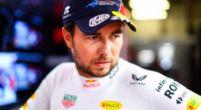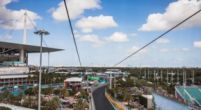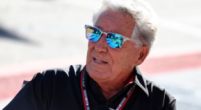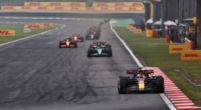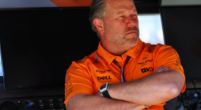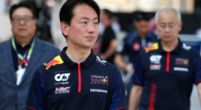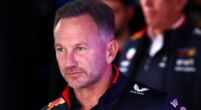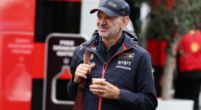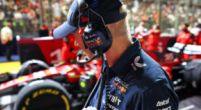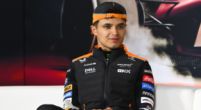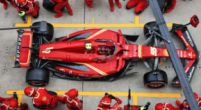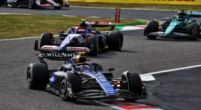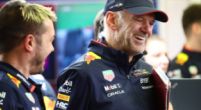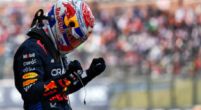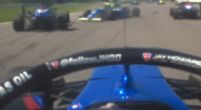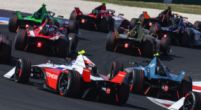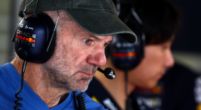Tech

Technical Analysis | Why Ferrari could be Red Bull's closest rivals in 2024
Despite a first half of the season below expectations, Ferrari finished the 2023 season three points shy of Mercedes' second-place finish in the Constructors’ Championship. The Scuderia showed a significant step forward after the summer break, which resulted from the hard work done at the factory back in Maranello to better understand the car race after race. In fact, they managed to be the only non-Red Bull team to win a race in 2023. Will they be able to fight for wins more often in 2024?
Ferrari struggled in the first half of the season
After the good performance in 2022, Ferrari were expected to fight with Red Bull for the Championship in 2023. However, during the tests in Bahrain and the first few races, it was clear that they didn’t have the pace to compete with Verstappen since they struggled mainly over the race distance.
From a technical point of view, the SF-23 had a very unstable aero-mechanical platform since the beginning of the season, which caused a lot of problems as the environmental conditions changed (like the gusts of wind or the asphalt temperature), making the car very difficult to drive.
The car behaviour changed a lot depending on the different layouts. The SF-23 wasn’t able to produce as much peak downforce as the Red Bull did (with the consequent effects on the tyres), and for this reason, it behaved on low-downforce circuits and stop-and-go tracks, where a high level of downforce wasn’t required. On the other hand, the car struggled a lot in all the medium and high-speed corners, where the understeering nature of the car came out. This unpredictability meant Ferrari’s car wore out the tyres more than their competitors during Sunday’s races.
During the first few races of the season, this was exactly what happened: after a good qualifying performance, where the SF-23 was able to wake up the tyres quickly and keep them in the right operating window over the lap, both Sainz and Leclerc struggled a lot with tyre management during the race, especially on high-deg circuits.
To add downforce to the SF-23 and to make the aerodynamic platform more stable, the Maranello team decided to bring a first upgrade package in Barcelona, where big changes were visible around the sidepod and floor area. The sidepod shape changed massively. While previously they showed the famous "goldfish bathtub", useful to direct the air towards the beam wing, they now showed an intermediate solution between this one and the one adopted by Red Bull.
An excavation has been kept in the internal part of the sidepod around the S-duct outlet to direct that airflow towards the beam wing. However, the central and external part of the sidepod was then modified to better exploit the Coanda effect (i.e. the tendency of the fluid to follow the surface on which it flows) to direct the flows towards the diffuser. Noticeable changes have also affected the undercut area below the cooling inlet, where the lower part of the sidepod had been hollowed out as much as possible to create a second channel to feed the rear of the car. In this case, however, due to the presence of the SIS (non-deformable lower structure), the aerodynamicists had to create a "hump" around this element, as it could not be integrated into the floor.

As for the changes to the floor, it featured a new external floor fence, more inclined towards the outside, to better manage the wake of the front tyres. Obvious changes also concerned the floor edge, with the appearance of a long carbon "knife", connected to the floor by metal supports and which presented a raised edge in the central section equipped with two vortex generators, useful for directing turbulence outside and to seal off the flow underneath the car.
All these changes aimed to improve the interaction between mechanics and aerodynamics, to make the aero-mechanical platform more stable and allow the SF-23 to run much closer to the ground thus generating more downforce from the Venturi channels. Despite these big visible changes, the gain in performance wasn’t that big, but they opened a new development path which would have guaranteed more profits in the long term.
Ferrari scored 32 points between Spain (where the car still suffered the high-speed corners) and Canada before another big package was brought in Austria. This introduced a lot of changes to the front of the car, as the SF-23 sported a new front wing and new floor fences at the entry of the Venturi channels. As for the front wing, the attachment of the nose to the second flap was now further back than in the previous version.
This new specification showed a different design of the last flap, which now had a longer chord and a more linear shape, combined with the presence of a gurney flap for approximately half of its length, useful for generating more load. Furthermore, to increase the out-wash phenomenon (i.e. the airflow is pushed outside of the front wheels to reduce drag), the endplate has been completely revised with a shape now more inclined towards the outside and with a small carbon flap in the inner part, to better divert the flow. In its upper part, the endplate has a more curved shape than the previous version and a different external carbon profile to manage the vortices that normally form at the tip of the wing. This is to improve the aerodynamic efficiency.


The changes to the floor fences were a direct consequence of the changes to the front wing. The inner fences had a more curvilinear profile, which was useful for generating a low-pressure area underneath the car. However, the external floor edge element was now more inclined towards the outside to push the turbulence of the front wheels outwards and had a small step at the connection to the actual floor.
All these solutions and a small review of the floor edge area allowed the SF-23 to generate more load on the front axle, better managing the front tyres, especially at high speed. The small changes to the rear were made to keep the general balance of the car, make it more stable, and improve tyre management over the race distance.

However, despite a good performance at the Austrian Grand Prix, both Sainz and Leclerc struggled a lot at Silverstone. All the high-speed corners put a lot of heat into the front tyres over the race distance, causing a temperature rise and a higher degradation than their competitors. Moreover, after a good performance in Spa, where the low downforce nature of the track particularly suited the SF-23, the car struggled a lot also in Zandvoort.
The car proved particularly difficult to drive in conditions of maximum downforce, as a too-high level of downforce on the rear axle increased understeer. Due to problems at the rear end of the car, the front didn’t manage to balance the load generated by the rear, and this made the car extremely unbalanced in the high-speed sections and under braking, thus making it very difficult to drive. For this reason, even on maximum load tracks, the engineers were forced to use a medium-high downforce wing-spec, to keep the car as balanced as possible and not trigger that understeer which was not particularly appreciated by Leclerc.
With only 10 points scored at the Dutch Grand Prix, Ferrari were able to work hard on the track and back at the factory in Maranello to understand the problems of their car, and they kept improving from Monza onwards, not only in qualifying, where the SF-23 had always been very strong but also over the race distance. In Singapore, the Scuderia was able to set up the car beautifully for the bumpy asphalt and the slow nature of the circuit, choosing the correct ride height and mechanical configuration to make the SF-23 fast around Marina Bay. The absence of high-speed corners helped Ferrari a lot during that weekend, as both Sainz and Leclerc were able to take advantage of the competitiveness of their car in qualifying to start the race in P1 and P3 and eventually, the Spaniard went on to win that race.
After that, the team brought the last upgrade of their season in Suzuka. A new floor to increase the downforce generated by the Venturi channels, making the car more “pointy”, and allowing it to run at a lower ride height. This new solution was characterised by new Venturi channel inlets: the two central elements that serve to direct the air coming from the front wheels now had a very similar shape, with a backward attachment to the upper edge of the floor and a curvilinear shape that extended forward for a slightly greater length.
The goal was certainly to better manage the flows under the car to obtain a good level of downforce and to make the car less sensitive to gusts of wind; for this reason, there were also visible changes to the terminal part of the floor edge, right in front of the rear tyres: the surface now took on a flatter shape, probably to better seal the tunnels, even at the cost of losing a bit of downforce (Ferrari's goal is to make the SF-23 as stable a car as possible on the rear, a major limitation since the beginning of the year). The shape of the diffuser had also been changed, aiming for better overall extraction of the airflow. This upgrade package made the car more stable around the famous Japanese circuit, especially with Leclerc, who suffered less than in the previous couple of races and managed to get P4.


From that moment on into the season, the team gained information on the car behaviour race after race, constantly improving their performance on all layouts.
More wins in 2024?
In 2024, Ferrari could clearly come back to winning more races than they did last year. Their goal over the winter was to create a more stable aero-mechanical platform, making the suspension system interact more efficiently with the car's aerodynamics. This should help them widen their car's working operation window, making the 676 project more stable regardless of external environmental conditions, with a constant performance on all different layouts. If they can accomplish this goal, they will fight with Mercedes and McLaren for the whole 2024 season and maybe will be able to challenge Red Bull for the win on some specific circuits.

